"We are entering the Christmas and year-end period in the worst possible way: the perception is that the tropical markets are currently at a standstill. In fact, the situation is identical to that of last year. Consumer spending remains subdued, with individuals demonstrating greater interest in Black Friday sales than in food. A thousand euros for a smartphone seems like a normal expenditure. On the other hand, when it comes to food, people are saving and it is fruit that is considered expensive," says Giorgio Donnarumma, sales manager at Nuovafrutta in Milan. The wholesaler also points out that before the 10th of December "there will be little movement of products with Christmas in mind. After the 10th? A mystery."
Giorgio Donnarumma visiting Fruit Attraction 2024
Lime
"The limited quantity of product currently entering the market is commanding premium prices, regardless of whether it originates from Brazil (Tahitian lime variety) or Mexico (Persian variety). The current market price is €12-13 per 4.5 kg crate. Sales are challenging, with limited activity due to slow consumption. Such quotations are typically recorded in other periods, around May to June."
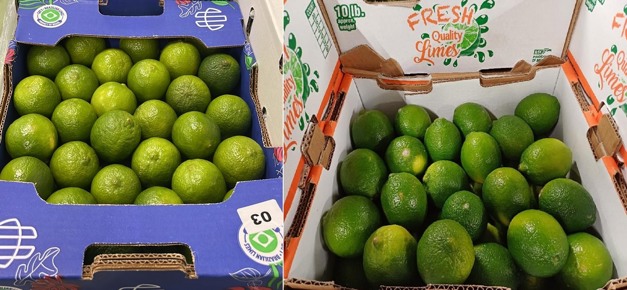
On the left is the Brazilian lime; on the right, the Mexican lime
Avocado
"The Moroccan Hass avocado campaign is now in its third week, while the Spanish campaign has only just begun. The initial price of the Moroccan Hass variety was high, but has recently reached a point of stability at 13-14 euros. The Spanish fruit is currently priced at 16 euros. Furthermore, South Africa, which offers hybrid varieties such as Gem and Lamb Hass, and Kenya represent other origin countries in this market. The price point in this sector is slightly lower than that observed in Morocco," explains Donnarumma.
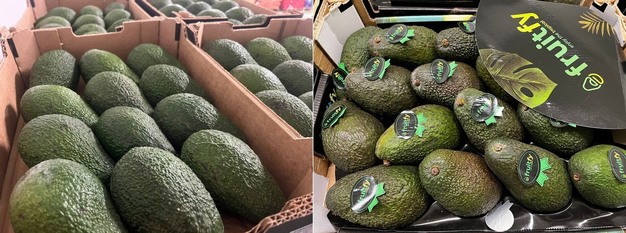
On the left: Hass avocados from Morocco. On the right: RTE version
"With regard to the green-skinned varieties, there has been a decline in purchase prices, as observed approximately three weeks ago. Our objective was to achieve a price of 6-7 euros. Now it seems that prices are trending upwards, towards 9-10 euros," the wholesaler continues. "The arrival of a more constant and quality supply of Pinkerton avocados is starting to be seen from Israel. The purchase price is currently around 10-11 euros. The campaign for the Spanish Pinkerton variety is scheduled to commence this week."
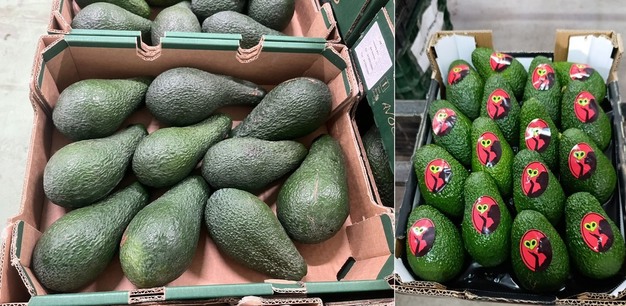
The fruit on the left is the Israeli Pinkerton avocado. The second variety is the Spanish Hass avocado
Papaya
In the case of this product, particularly the Formosa variety, Donnarumma characterises the market as being extremely slow. "There has been a significant reduction in consumption, with supply exceeding demand. In the coming weeks, there may be a reduction in the number of goods arriving from Brazil due to unfavourable weather conditions in the country. During the end-of-year festivities, papaya is a product that sells well because it is used in gift baskets."
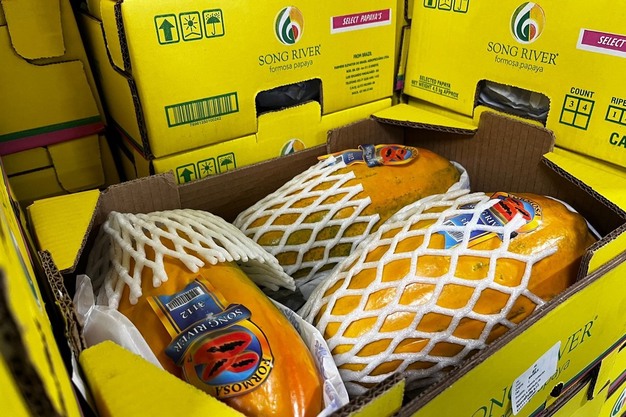
Brazilian Papaya - Formosa Variety
Mango
The situation is no better for mangoes, which are in a downturn for both sea and air transport. All this translates into very low consumption. "The Palmer and Tommy Atkins varieties from Brazil, as well as from other countries, are bought for around €4-5 or even less. In the case of the Peruvian mango, this is the third week that it has been cheaper to buy the fruit directly in Europe than at its origin: consumption has fallen so much, with large quantities being imported, to the point that one can buy pallets as needed and pay the same price as the importer."
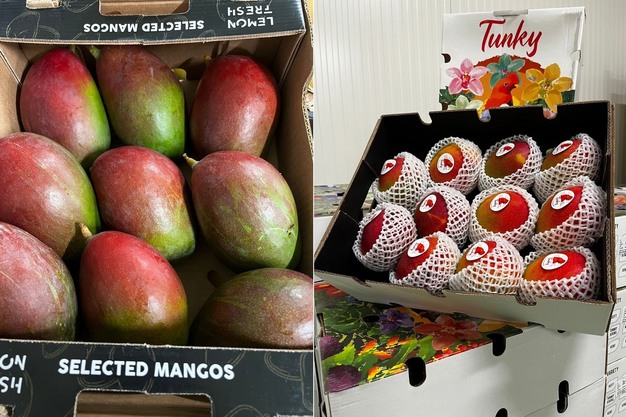
On the left: Brazilian Palmer mango shipped by sea; on the right: Kent mango shipped by air from Peru
Ginger
"Sales of Chinese ginger are nearing the end," says Donnarumma. "Our supplier did not ship the last cargo at the beginning of the month due to the poor quality of the end-of-season ginger and the high prices, which were approximately USD 2,500 per tonne CIF Europe. Furthermore, extending the transit time from 26 to 45 days is of no help. We will wait and purchase again from mid-December, when prices are expected to decline."
"The supply from Brazil remains limited. The current price is just under EUR 3/kg, with a regular level of consumption. The purchase price for Brazilian ginger is approximately 38-40 euros per 13.5 kg box. The quality is fair, and there is no urgent need to purchase."
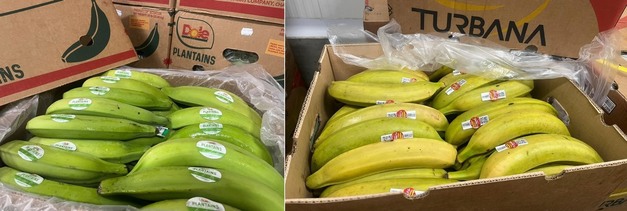
On the left: green plantain from Ecuador; on the right: ripe plantain from Colombia
Platano, okra and yuca "There are two different market trends for the plantain, depending on its origin: regular for Ecuador and very high for Colombia. While we sell the green Ecuadorian plantain at an average of 23-24 euros, the ripe yellow Colombian plantain starts at 35-36 euros and increases. The main reasons for this are weather conditions and plant diseases."
"Due to hurricanes in the tropical zone, the price of okra transported from Honduras has risen from 25 to 40 euros because of the shortage of the product. In 20 years of activity, we have never seen such prices."
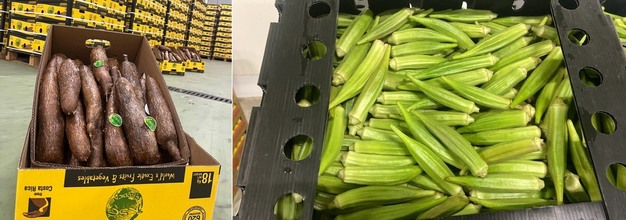
Costa Rican yuca and Honduran okra
The present moment is very tense for the yuca. "We can't stop selling, otherwise we risk going out of business, but we have to use our heads and calculate the quantities and time needed. In Europe, a good quality certified product costs around 23 euros," concludes Donnarumma.
Article photos provided by Giorgio Donnarumma
For more information:
Nuovafrutta
[email protected]
